This is the third in a series of posts on the Hasselblad X2D 100C camera and the XCD lenses. You will be able to find all the posts in this series by looking at the righthand column on this page and finding the Category “X2D”.
I made a series of dark-field images with the X2D at various shutter speeds. I analyzed the images, calculated the read noise, and I’ll show you the results. These curves show the engineering dynamic range (EDR), which I’m defining here as full scale divided by the root-mean-square (rms) value of the read noise, using lossless compression. Shutter speed was 1/1000 second. All these tests were done with no lens. I used a body cap to get the dark field. The curves are all done using 2000×2000 pixel crops that have been shifted leftward just far enough to avoid the center column of the sensor, which is sometimes the site of aberrant behavior. All exposures were made at ISO 800.
The vertical scale is EDR in stops. The EDR for all four raw channels is plotted, and I colored then to show which channel is which. I would expect all four channels to be right on top of each other, and they’re not. I’m not sure what’s going on, but the differences appear to be minor for normal photography.
Here are some dark field spectra.
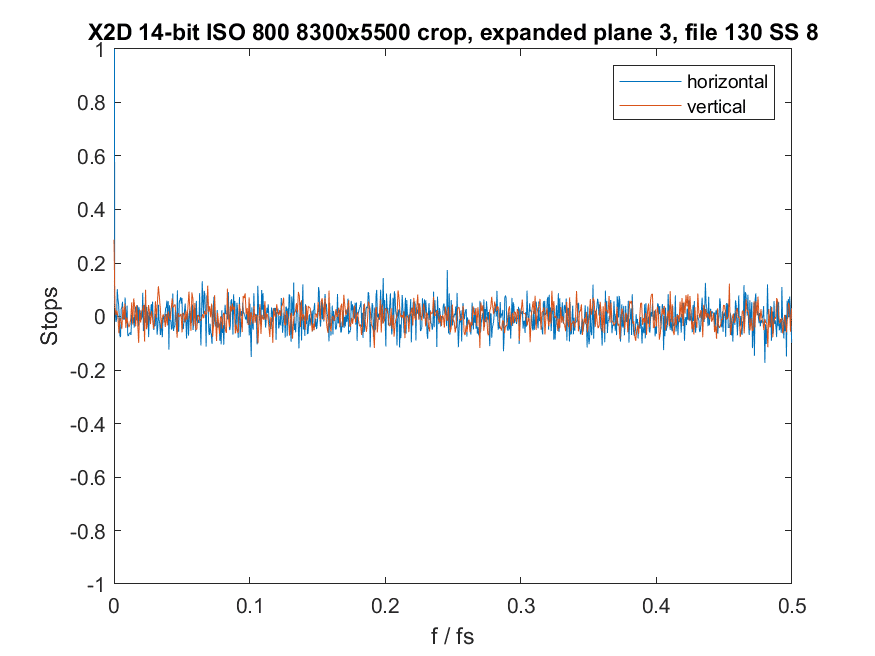
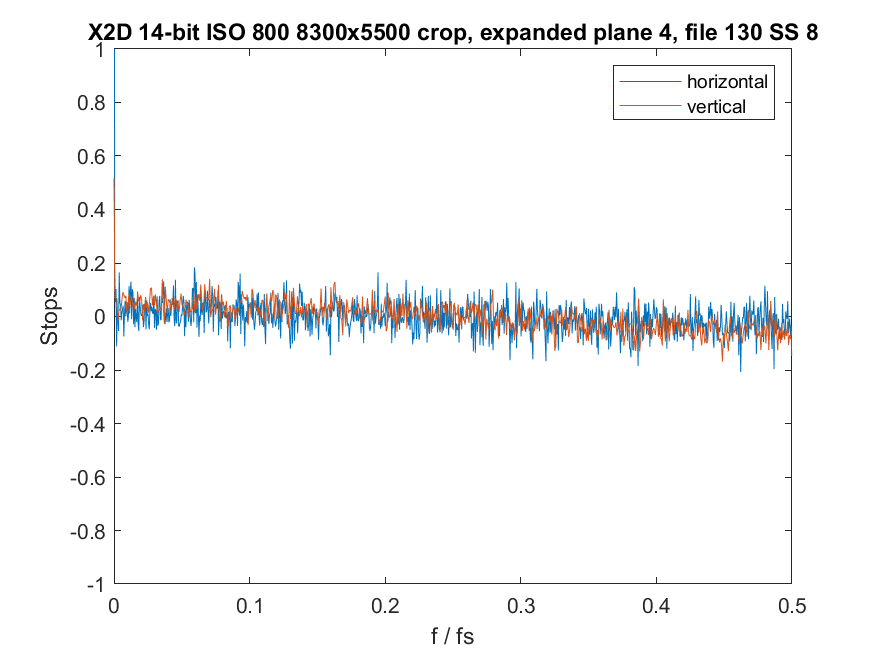
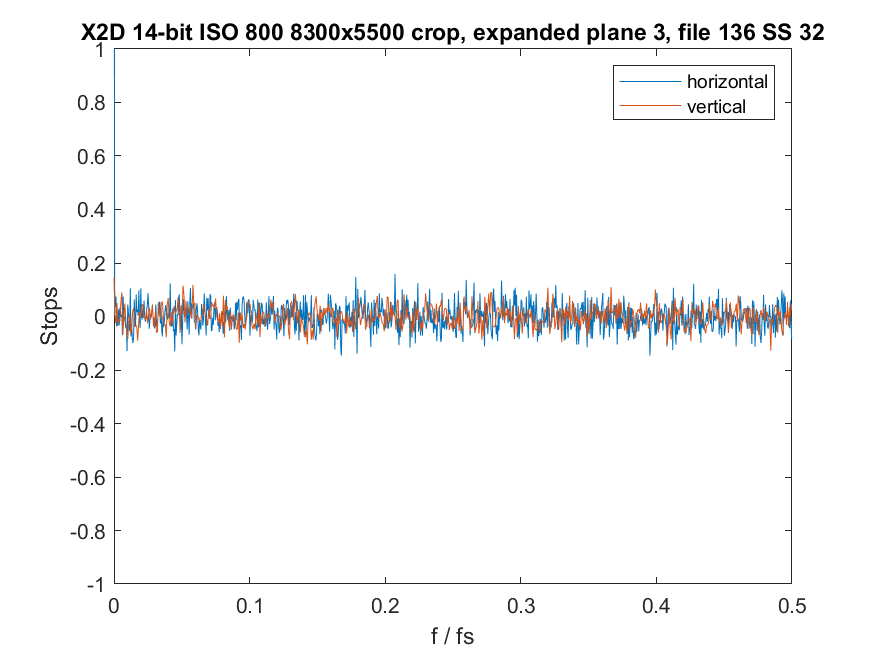
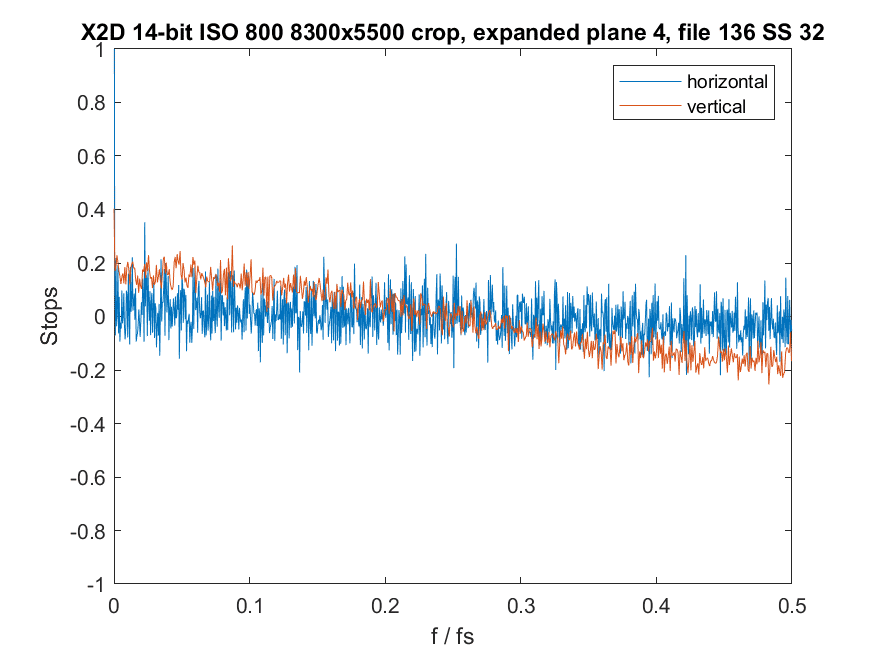
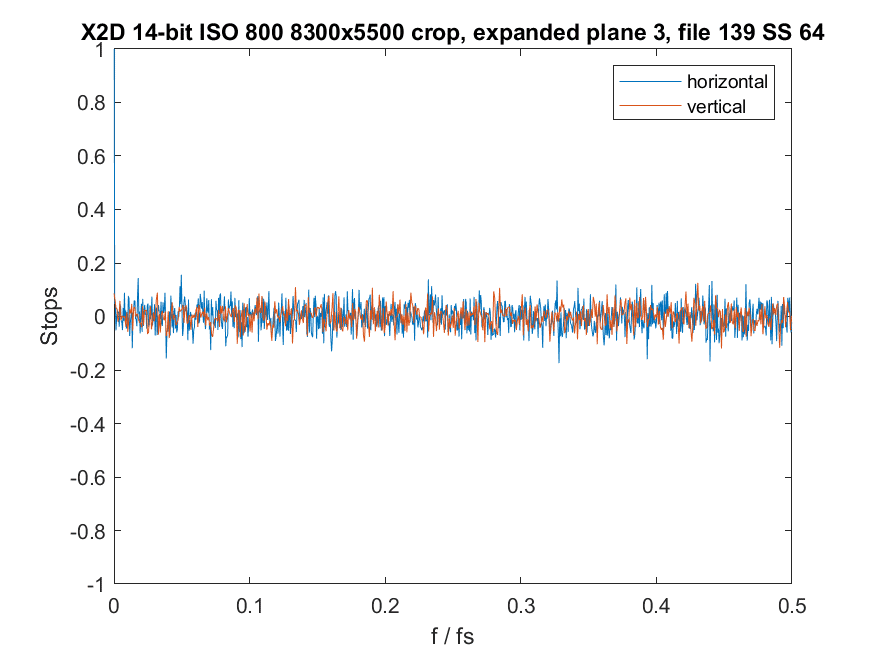
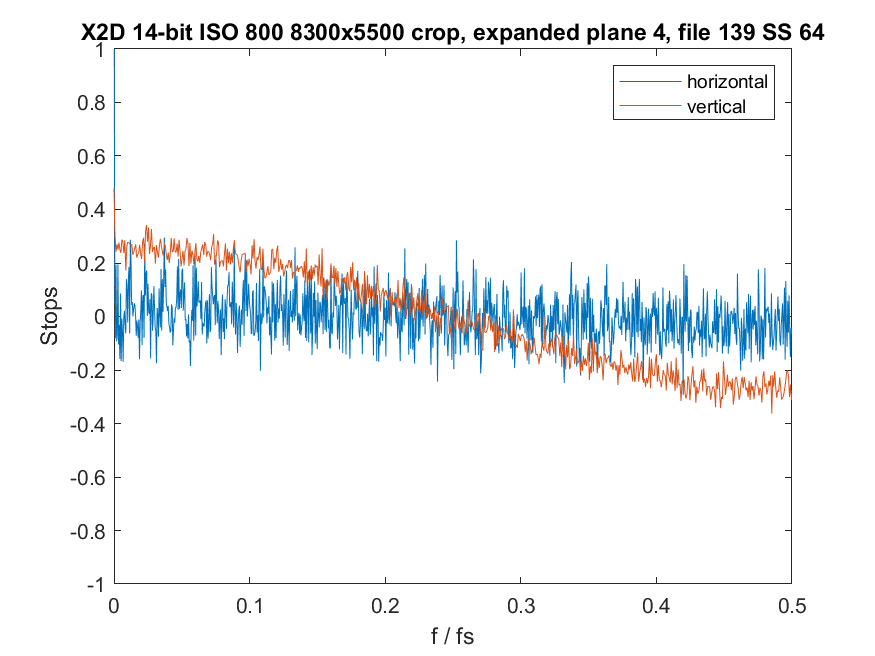
I’d be surprised if this results from a change in smoothing in the camera. I’m guessing it comes from the distribution of the noise shifting towards longer tails as the shutter speed increases and dark current variability becomes more of a factor.
In general, this is exemplary performance on Hassy’s part. I like it when the camera manufacturers don’t mess with the spatial characteristics of the image (I’m looking at you, Sony).
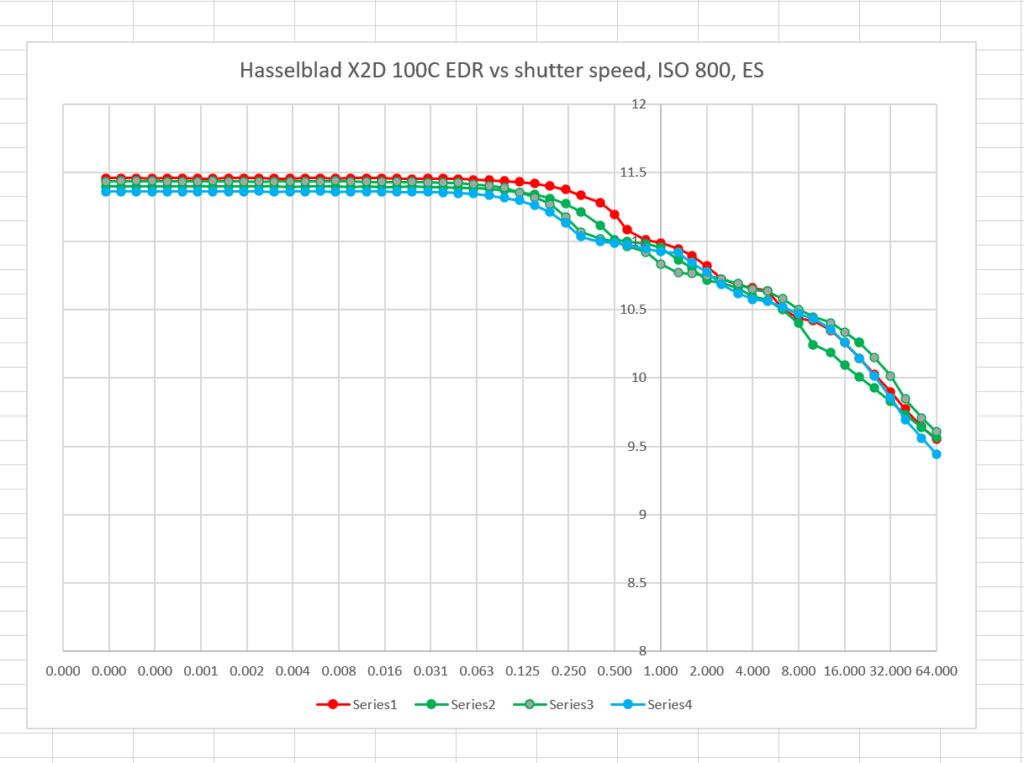
So, do all cameras naturally lose dynamic range as the shutter speed increases? I had no idea that was even a thing.
Cameras usually lose dynamic range as the shutter speed decreases, because of dark current. The longer time that current is integrated, the worse the noise is.